Lesson summary
In this lesson, students will explore the concepts of balanced and unbalanced forces by investigating how these forces affect the motion of objects. They will focus on renewable energy sources like wind turbines and hydro turbines. The lesson will involve practical experiments and force measurements.
Learning intentions:
Students will...
- understand how balanced and unbalanced forces influence the operation of wind turbines and hydro turbines, and how force magnitude and direction affect these energy systems.
Success criteria:
Students can...
- measure the magnitude of a force using a force meter, and represent the magnitude and direction of forces acting on an object using force arrow diagrams
- conduct experiments to observe how varying amounts of force affect the performance of wind turbines and hydro turbines
- analyse how changing the force impacts the efficiency and functionality of wind turbines and hydro turbines.
Lesson guides and printables
Curriculum links
Select your curriculum from the options below.
Lesson details
Skills
This lesson is designed to build students’ competencies in the following skills:
- creative thinking
- collaboration
- communication
- digital literacy
- problem-solving
- prototyping
- reflection
Curriculum Mapping
Australian Curriculum (v9.0) content description: Year 7, Physical Sciences
Students learn to:
- investigate and represent balanced and unbalanced forces, including gravitational force, acting on objects, and relate changes in an object’s motion to its mass and the magnitude and direction of forces acting on it (AC9S7U04).
Relevant parts of Year 7 achievement standards:
Students represent and explain the effects of forces acting on objects.
Australian Curriculum (v9.0) content descriptions: Related content
Year 7 Design and Technologies
Students learn to:
- analyse how force, motion and energy are used to manipulate and control engineered systems. (AC9TDE8K03)
NSW Syllabus outcomes:
- describes the effects of forces in everyday contexts (SC4-FOR-01)
General capabilities: Critical and Creative Thinking
Cross-curriculum priority: Sustainability
Level of teacher scaffolding: High: facilitation of experimentation and explicit teaching of concepts required.
UN Sustainable Development Goals
UN SDG 7: Ensure access to affordable, reliable, sustainable and modern energy for all
- Target 7.1: By 2030, ensure universal access to affordable, reliable and modern energy services.
- Target 7.3: By 2030, double the global rate of improvement in energy efficiency.
Resources Required
- Force meters
- Live demonstration materials: a toy car, a ramp, and different weights
- Turbine creation materials (1 set for each group)
- Turbine model for demonstration
- Wind and hydro turbine creation guide
Additional Info
This lesson has been developed in partnership with the Queensland Government through Queensland's Clean Energy Workforce Roadmap. Cool.org would like to acknowledge and express our gratitude to the Clean Energy Council for the expertise and advice provided in creating these resources.
Related Professional Learning
STEM Professional Learning Pathway
Quick summary: Enhance your practice with Cool.org's STEM Professional Learning Pathway. This year-long plan is designed to build your skills and capabilities in teaching STEM, ultimately transforming you into a STEM Innovator. The pathway will prepare you to integrate STEM education effectively, adapt to technological advancements and inspire students to succeed in a rapidly evolving world.
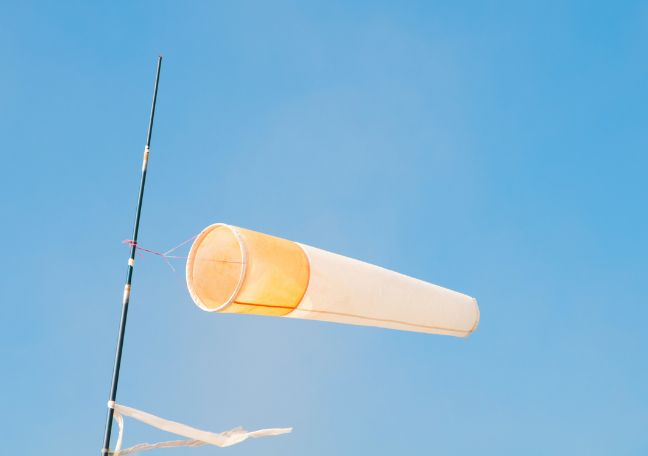
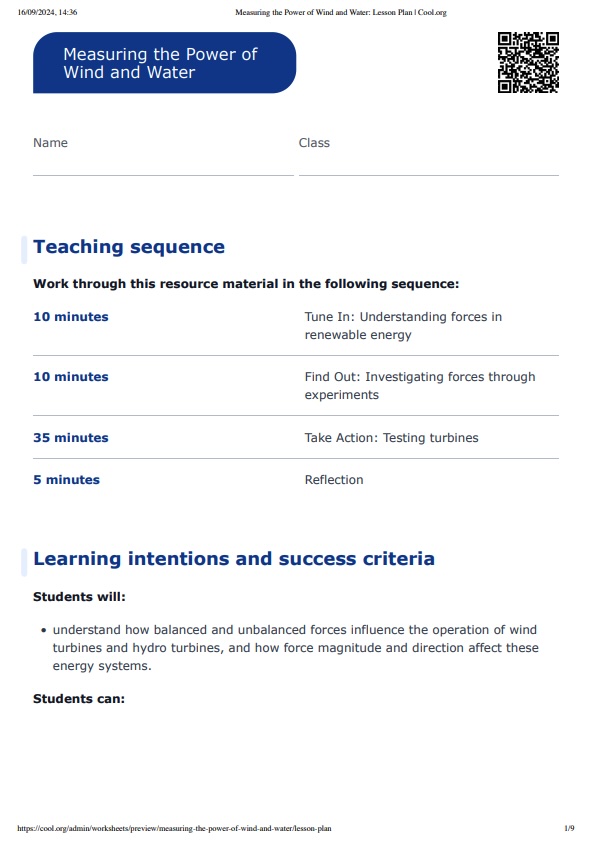
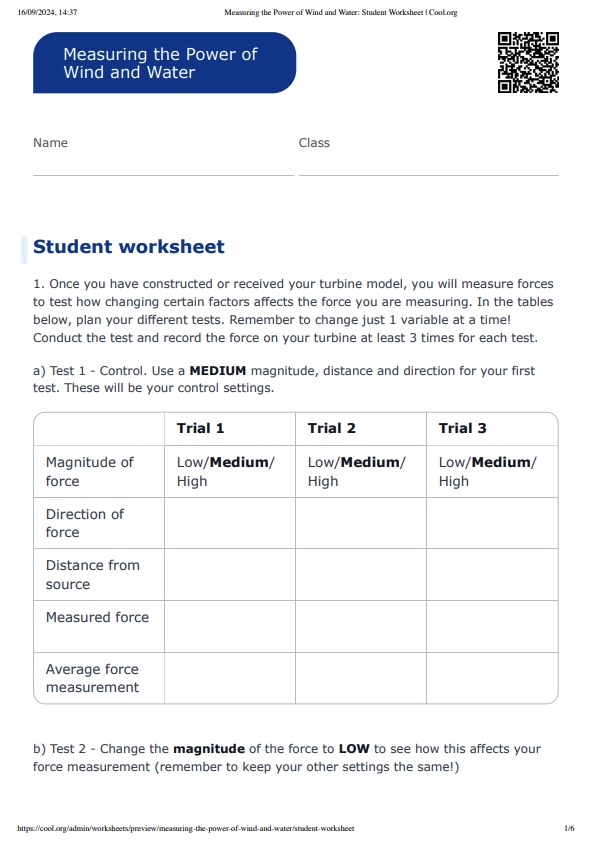
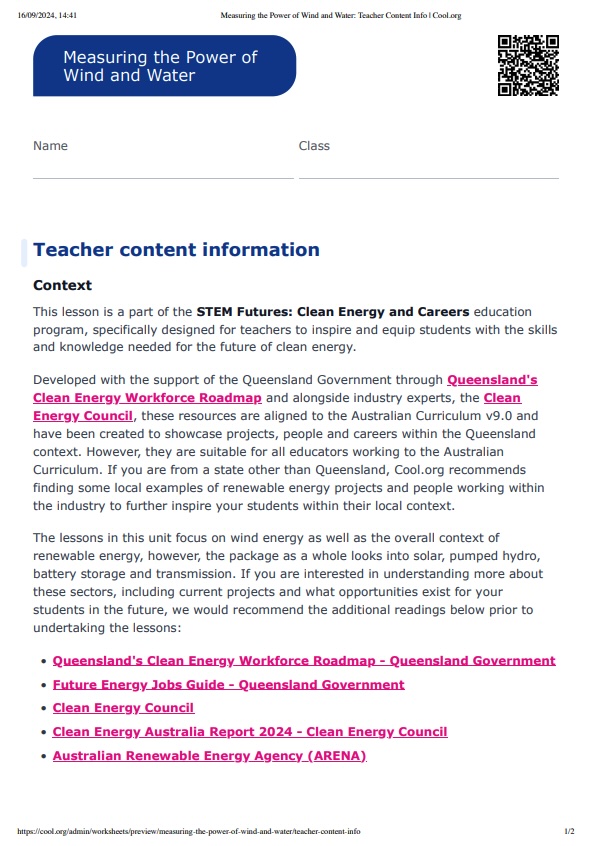
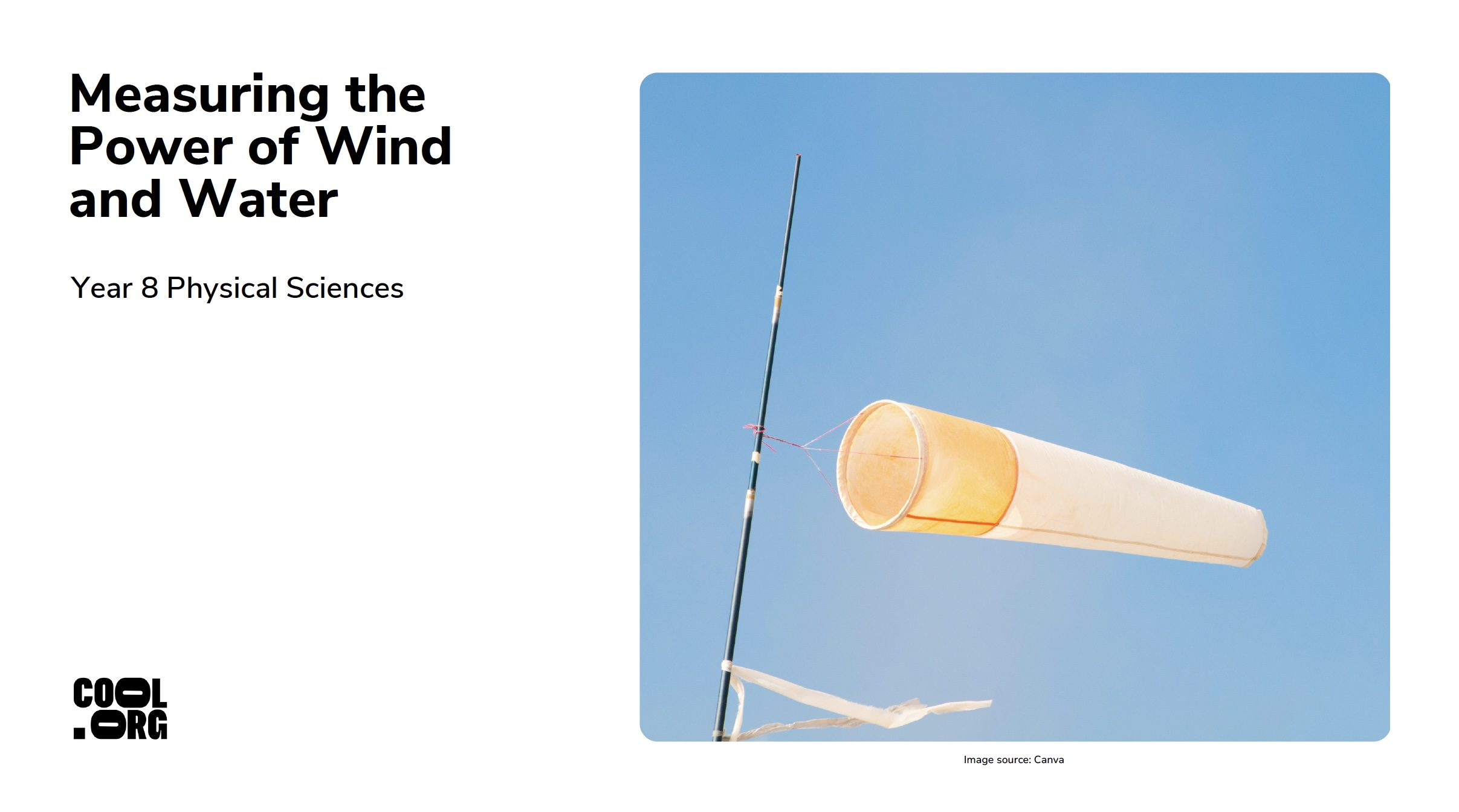
Welcome back!
Don't have an account yet?
Log in with:
Create your free Cool.org account.
Many of our resources are free, with an option to upgrade to Cool+ for premium content.
Already have an account?
Sign up with:
By signing up you accept Cool.org's Terms and Conditions(Opens in new tab) and Privacy Policy(Opens in new tab).